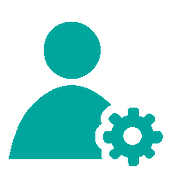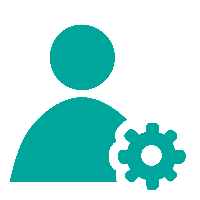 When I was in fifth grade and the brand new, first generation iPod mini came out, I had to have it. It was trendy, cool, and came in blue. Previously when I wanted to listen to music, I borrowed my dad’s Napster mp3 player and listened to Bruce Springsteen and Willie Nelson. Despite my love for Willie and the Boss, I felt great need for a device of my own where I could store all of my favorite music. I was elated when I got the device for my birthday. I told all my friends and brought it to school to show them, but did I ever really use it? Installing iTunes and setting it all up proved too difficult for my ten-year-old self and when I wanted to listen to music, I still borrowed my dad’s. That’s the point. You can pick the newest, most cutting edge software to implement at your business, but if you or your team are never going to learn how to use it, what's the point? Ten-year-old Amanda should have asked for a Napster. When you are looking for a new software, find your Napster. Not in the sense that your software choice will be obsolete in five years - actually, try to avoid that- but in the sense that you and your whole team will get a lot of positive, genuine use out of it.
When I was in fifth grade and the brand new, first generation iPod mini came out, I had to have it. It was trendy, cool, and came in blue. Previously when I wanted to listen to music, I borrowed my dad’s Napster mp3 player and listened to Bruce Springsteen and Willie Nelson. Despite my love for Willie and the Boss, I felt great need for a device of my own where I could store all of my favorite music. I was elated when I got the device for my birthday. I told all my friends and brought it to school to show them, but did I ever really use it? Installing iTunes and setting it all up proved too difficult for my ten-year-old self and when I wanted to listen to music, I still borrowed my dad’s. That’s the point. You can pick the newest, most cutting edge software to implement at your business, but if you or your team are never going to learn how to use it, what's the point? Ten-year-old Amanda should have asked for a Napster. When you are looking for a new software, find your Napster. Not in the sense that your software choice will be obsolete in five years - actually, try to avoid that- but in the sense that you and your whole team will get a lot of positive, genuine use out of it.
We are creatures of habit. We become set in our ways and are not necessarily quick to adapt. Sure, I knew Steve Jobs was onto something with this iPod thing. I was sold on it, but still, I didn’t make the transition until years later. Your sales team may be the same way. List the features and it all sounds great. But if it's too complex, what's to stop them from borrowing their dad’s Napster, so to speak. This is a common occurrence with traditional CRM software, as it tends to be unnecessarily complex for small to medium sized businesses, making it hard to integrate into day to day operations. Gene Marks at Forbes notes that user error is often the biggest issue with traditional CRM software. Managers choose solutions that are too complex, and then don’t push employees to adopt them, or employees are unwilling to learn. Additionally, different teams (sales, marketing, accounting, etc.) have different ideals for what they want in a solution. With a complex software, it's not always easy to see how it can meet individual department needs, or to train employees to use it in a consistent, pan-business way once they have discovered how it best serves their division.
That is why it is important to choose a software that your employees see clear benefits from, and will adopt immediately. For these reasons, Mobile CRM software is a stronger solution than traditional CRM software for field sales organizations. Mobile CRM solutions boast clear benefits to clients, sales reps, and managers. Like most CRM solutions, Mobile CRM software is cloud based making the information centralized and available to all employees. In addition to logging client data that can generate helpful leads and targeted marketing for clients, Mobile CRM software can simplify the tasks of making sales trips, scheduling logistics, filling out forms, and other administrative work. Because reps can clearly see how the software will make them more productive, integration is an easy sell. Additionally, because Mobile CRM software was created for sales reps, it is widely intuitive and includes a host of features that are customizable for each client they encounter. It is not a one size fits all tool; it is customizable and adaptable for reps, making it the clear, justifiable option to implement over traditional CRM.
I once got a shiny new iPod and didn’t do anything with it. By the time I bothered to download iTunes and set it all up, there was an entirely new, cooler iPod out and I was kicking myself. Don’t follow my example. Don’t waste your money and resources on software that you won’t use, and risk coming across a better solution later when you have nothing left to put into it. Traditional CRM can be very helpful for large companies, but often does not fulfill the needs of smaller companies, and proves difficult to integrate. Make sure you don’t waste your time on the wrong software. Instead, find the one that will be most easily adopted by your employees and effective for their purposes, not the fanciest new one. This will improve both customer and employee experiences.


 When I was in fifth grade and the brand new, first generation iPod mini came out, I had to have it. It was trendy, cool, and came in blue. Previously when I wanted to listen to music, I borrowed my dad’s Napster mp3 player and listened to Bruce Springsteen and Willie Nelson. Despite my love for Willie and the Boss, I felt great need for a device of my own where I could store all of my favorite music. I was elated when I got the device for my birthday. I told all my friends and brought it to school to show them, but did I ever really use it? Installing iTunes and setting it all up proved too difficult for my ten-year-old self and when I wanted to listen to music, I still borrowed my dad’s. That’s the point. You can pick the newest, most cutting edge software to implement at your business, but if you or your team are never going to learn how to use it, what's the point? Ten-year-old Amanda should have asked for a Napster. When you are looking for a new software, find your Napster. Not in the sense that your software choice will be obsolete in five years - actually, try to avoid that- but in the sense that you and your whole team will get a lot of positive, genuine use out of it.
When I was in fifth grade and the brand new, first generation iPod mini came out, I had to have it. It was trendy, cool, and came in blue. Previously when I wanted to listen to music, I borrowed my dad’s Napster mp3 player and listened to Bruce Springsteen and Willie Nelson. Despite my love for Willie and the Boss, I felt great need for a device of my own where I could store all of my favorite music. I was elated when I got the device for my birthday. I told all my friends and brought it to school to show them, but did I ever really use it? Installing iTunes and setting it all up proved too difficult for my ten-year-old self and when I wanted to listen to music, I still borrowed my dad’s. That’s the point. You can pick the newest, most cutting edge software to implement at your business, but if you or your team are never going to learn how to use it, what's the point? Ten-year-old Amanda should have asked for a Napster. When you are looking for a new software, find your Napster. Not in the sense that your software choice will be obsolete in five years - actually, try to avoid that- but in the sense that you and your whole team will get a lot of positive, genuine use out of it.

